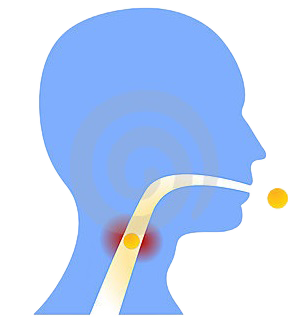Nose & Sinus
At North Shore ENT, we specialize in all medical and surgical aspects of the nose and sinuses, which cause difficulty with nasal breathing, sinusitis, hearing loss, and dizziness.
NASAL OBSTRUCTION
Nasal obstruction is a common problem affecting many people. Loss of sense of smell, mouth breathing or difficulty breathing through the nose, nasal congestion and runny nose are some of the many symptoms that contribute to blocked nasal passages. Causes of nasal obstruction include allergies, chronic sinus infections, deviated septum, or nasal polyps. Our physicians will evaluate your nasal problem and suggest a medical treatment that suits your diagnosis. When standard medical therapy fails, surgical treatment may be recommended to correct the underlying problem and restore airflow through the nasal passages.
SINUS INFECTIONS
Nasal congestion, yellowish or greenish nasal drainage, facial pressure and pain, and chronic post nasal drainage– these are all signs that you may have a sinus infection. Sinus infections typically are caused by a prior upper respiratory infection. However, any disorder that causes inflammation of the nasal passages, such as allergies, may predispose you to a sinus infection. Inflammatory nasal polyps, which result from chronic inflammation of the nasal passages, can also block nasal breathing and cause sinus drainage, resulting in symptoms of chronic sinusitis.When standard medical therapy fails to relieve symptoms, it may be time to consult the physicians at North Shore Ear, Nose, and Throat Associates. After a complete examination using advanced fiberoptic tools to clarify the cause of your chronic symptoms, our physicians can recommend the best treatment options for you. This may include aggressive medical therapy, allergy treatment, or surgical intervention. Our physicians are trained in endoscopic sinus surgery, which is the gold standard for establishing permanent drainage pathways for the sinus cavities to relieve the symptoms of persistent sinusitis.
NOSE BLEEDS
Nosebleeds are commonly seen in children. Most episodes resolve spontaneously and represent nothing more than a nuisance to the parent and child. Occasionally nosebleeds become recurrent or persistent and may require specific treatment. Rarely, a nosebleed may be the presenting symptom of a serious local or generalized disease.Nosebleeds are often the result of extremely dry nasal linings which lose the protective layer of mucus. This leads to fragility of the membranes which then has a tendency to bleed following the slightest trauma. Nosebleeds are most common during the winter because of the increased incidence of colds which leads to swollen nasal membranes with engorged blood vessels. In addition, central heating during the winter months tends to dry the nasal linings.When a nosebleed occurs, help the child remain calm and then:
- Pinch all the soft part of the nose together, below the bones, between your thumb and the side of your index finger or soak a cotton ball with Afrin or Neo-Synephrine spray and place into the nostril.
- Press firmly but gently with your thumb and the side of your index finger toward the face, compressing the pinched parts of the nose against the bones of the face.
- Hold that position for a full five minutes by the clock.
- Keep the head higher than the level of the heart. Sit up or lie back a little with the head elevated.
- Apply ice – crushed in a plastic bag or washcloth – to the nose and cheeks.
More severe cases with frequent bleeding and significant blood loss may require additional treatment. A chemical cauterization of the enlarged blood vessels using silver nitrate can be performed in the doctor’s office. This is usually done after the application of topical anesthetic. If bleeding recurs after an attempt at chemical cautery, more aggressive measures may be required including electrical cautery or surgery to tie off the bleeding blood vessel, however, surgical intervention is extremely rare in children.
NASAL FRACTURES
If you or your child has experienced a nose injury, it is important that you treat the fracture in a timely manner to avoid more serious problems later. Typically, the nose should be evaluated within 3-7 days of the injury after the swelling subsides and before the bones begin to heal. Initial swelling can be minimized with ice and elevation. If surgery is indicated, it should be performed between 10 days and two weeks from the date of injury. If this treatment window is missed, the nose can still be repaired, but rhinoplasty may be required.
Benefits from Surgery
Cartilage or bone may be broken, out of place, or injured. To restore your appearance, these may need realignment. Many individuals have prior injuries, distortions, or asymmetries that have gone unnoticed. We ask that you bring a pre-injury photograph to help see what your nose was like before injury. A fracture reduction will not improve old deformities. Even if the nose is made symmetrical it may drift back into the pre-injury position. After the structures have healed, a rhinoplasty (surgery on the nose) can help correct deformities.
Alternative Care
The choice is either no evaluation or evaluation, treatment or no treatment. You could let an injured nose just heal as it is. Deformities would not be corrected and problems that might be improved would not be not addressed.




